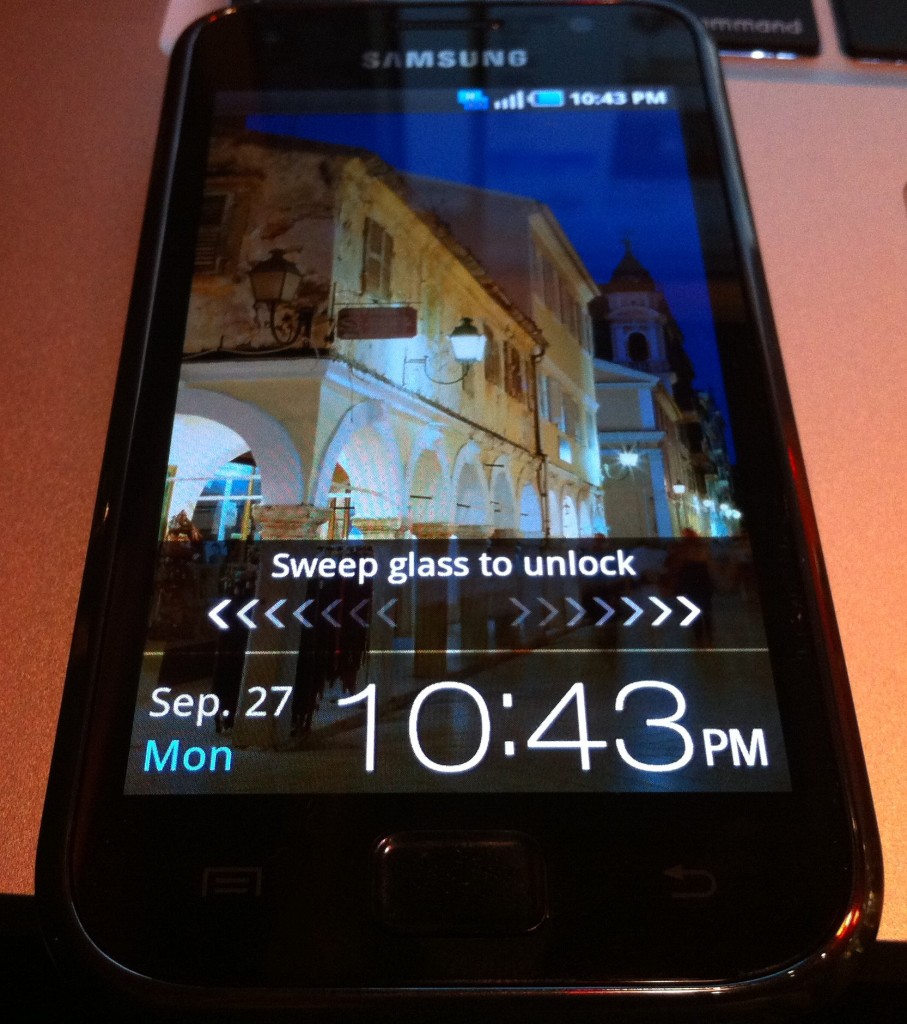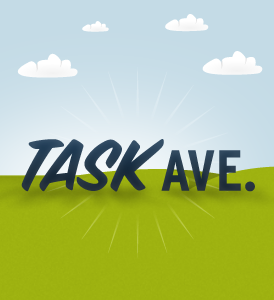Bell Samsung Galaxy S Vibrant Review [Updated]
Update [November 9th, 2010]: I have been running a heavily modified version of Froyo on the Galaxy S for the past few weeks, and I have to say that the development community has done a great job of augementing All of Samsung’s various improvements into a single ROM. The GPS issue seems largely fixed, though there are still occasional issues with keeping a lock at high speeds.
Battery life as well has been improved drastically since the first Froyo test builds, and are now on par with mature 2.1 builds.
Other minor changes also improve the overall user experience: the keyboard has been dramatically improved, and include the option of holding down to select numbers like the stock HTC keyboard.
Included on the notification widget is a Rotation Lock button to prevent those bedtime reading orientation problems. Sound quality has been improved for headphone users, as many people were really unhappy with the low volume and sound reproduction from 2.1.
Note that Android 2.2 has not been officially released yet by Bell, but the update should be coming in the next few weeks. Stay tuned for more info.
—
A few weeks ago, MG Siegler of TechCrunch wrote a scathing article of how the “openness” of Android has lost its way, called Android Is As Open As The Clenched Fist I’d Like To Punch The Carriers With, a seeming indentured servant to the carriers. It opened its arms, and the carriers took it in their embrace, smothered it, and forced their horrid food down its throat. And, being the malleable entity that it is, Android changed shape. It morphed and adapted, and as it sits, the platform is almost invisible behind the skins and layers, and whatever other “enhancements” the manufacturers and carriers conspire to award the end user.
Enter Samsung, and their ubiquitous and pervasive Galaxy brand. The Galaxy S was introduced earlier this year at CTIA, and marked the first noticeable hardware upgrade to Google’s own Nexus One and its successors. Replacing the Snapdragon was the Hummingbird; instead of the 3.7” AMOLED screen was a 4” Super AMOLED screen. Instead of stock Android 2.2 focusing on performance over good looks was… TouchWIZ3 running over Android 2.1. Umm…
But, this was Samsung’s flagship device. Surely, the layer was usable, and indeed, added to the feature-set of what Google originally shipped. I mean, what use would all that gorgeous hardware be if the software was bloated and nigh unusable? With the Galaxy S, we sort of face that problem head-on. While the software is not as putridly unusable and ridiculously slow-performing as the Sony Ericsson Xperia X10, it doesn’t even come close to the colourful, brushed perfection of HTC Sense.
Samsung equips the device with some fierce hardware. Running a Cortex A8-based processor with a built-in GPU, the Hummingbird processor, running at 1GHZ, is blazing fast. It has 512MB RAM and 16GB installed memory, which is actually a Class 2 microSD card soldered to the motherboard, but the sentiment is good. The camera, while 5MP and able to capture HD video, is without a flash, and as a result, lacks the point and shoot-replacement quality of the iPhone 4. In sunlight, the snaps are great. In anything less than ideal lighting, good luck trying to fish a picture out from under all that noise. It also comes with a VGA front-facing camera, which will suffice for video conferencing (over 3G!).
The build quality of the device is fair. It has a chrome bezel that, on a good day, would be mistaken for an iPhone 3GS, and on a bad day, a really poorly-constructed iPhone 3GS. The backing plastic has quality issues that need to be addressed. I had had two units that creek like the trees outside my house during a storm, and, without a case, I didn’t feel comfortable holding the phone. It just doesn’t feel secure. The screen, however, is flush with the Gorilla Glass on the screen, and is exactly as good as everyone says: the colours are vivid, the contrast absolute, the sharpness knife-like. It’s the first screen on the market that gives the iPhone 4 a run for its money, and for my dollar, I prefer it. While not as high a ppi (pixel per inch) count, the 480x800px resolution renders text precisely, and reading eBooks on the device is a pleasure.
Honestly, looking straight down at the screen, disregarding the chrome accent, the Galaxy S is an attractive device. It doesn’t scream “robust” the way the iPhone 4 does, nor does it scream sleek and tender like the X10, but it garners its own accolades by staying thin and comfortable in the hand.
Performance
Moving to the build of Android 2.1 on the phone, TouchWIZ3 is not ugly. It may be cartoonish, but it serves its purpose fairly well without getting too far in the way of the user. In fact, if you’re comfortable with Android as a platform, you will be happy with the way the homescreens and app drawer are laid out. The biggest departure you will notice is that the app selection is horizontal instead of vertical. Big deal? Not really. There are some benefits, too: the permanent, quick-select buttons at the top of the drop-down notification bar are handy. Quickly enable WiFi, Bluetooth, GPS and Vibrate mode. The four permanent dock buttons, Phone, Contacts, Messaging and Applications, are not editable, but you can install a third-party launcher, which will replace the TwLauncher (I recommend the excellent Launcher Pro) and be rid of Samsung’s half-baked default.
Within the OS itself, you will find some standard Android fare: Marketplace, Gmail, Camera, Browser, Gallery, Maps, etc., but Samsung has felt it prudent to add some bloatware to the mix. We have such lovely additions as Mini Diary, Social Hub and Samsung Apps, all useless to the average customer, unless you plan to keep your diary (with pics!) on your Android phone. I don’t hate these additions on priciple: they attempt to add value to the Android experience. Samsung Apps, however, is supposed to offer consumers more so-called choice when it comes purchasing apps on their Samsung devices, from Android through Bada, but there is little value in what they currently offer, and nothing one couldn’t find a better alternative to in the Marketplace. It just screams “synergy” and corporate meddling, but it comes off as frustrating and confusing.
Bell also makes several additions to the Android experience. They push Kobo’s eReader app as well as TeleNav’s GPS software, the latter of which needs a $10/month subscription to operate. These apps cannot be deleted, either, which is not only insulting but counter-intuitive to those who want to use their phones without added bloat. Sure, you could say, “this is pervasive through the whole industry now, so why should Bell be any different?” but that isn’t my point. The industry seems to think this is OK, like when everyone was up in arms over cinemas showing full-length advertisements before the coming attractions; we now don’t even bat an eye. But, as Mr. Siegler pointed out in his aforementioned article, Apple would never let this happen on their iOS platform. The very idea of it is preposterous. Because Apple wouldn’t allow it, but mostly because the platform is not designed to be altered. Apple tries very hard to keep the user experience, through the generations, uniform. Only with iOS4 have they started preventing older generations from accessing features available to the newer, more powerful versions. Android, with its fragmentation, has been doing this from the beginning.
But, rest assured, all the software you want to download from the Marketplace is going to be available in Canada for your purchasing pleasure. Most of the newer applications, designed for Android 2.1 and above, are going to run very, very smoothly on the Galaxy S. The GPU is the fastest currently available on an Android device, and arguably, on any smartphone. High-res games such as Angry Birds and Fruit Ninja, recently ported over from iPhone, run great on the multitouch screen.
In fact, the multitouch is the best I’ve used on an Android device, and I’ve used quite a few. True, my last lengthy excursion into Android multitouch was on the Nexus One, which, while a fantastic piece of hardware, was sorely lacking in the screen precision department. As a result, typing on the device was more a frustrating chore. The Galaxy S, on the other hand, types like a dream. The 4” screen, even in portrait, provides enough space between keys for accurate touch-typing, and the error correction on keyboards such as Smart Keyboard Pro and Better Keyboard, is incredible. Better even than the iPhone’s, and that’s a tall order. I’ll put it this way: I type as fast on the Galaxy S as I do on my BlackBerry 9700.
Bundled, too, with the Galaxy S, is Swype, the better alternative keyboard. Without your finger leaving the screen, you glide from one letter to another to form logical combinations that, even if not completely accurate, turn accurately into words. Most of the time. It’s not perfect, but the error correction is improving with every version update, and, if you’re good, is mighty quick.
The Galaxy S will be updated to Android 2.2 in the fall; this could mean early October (as the latest leaks have shown) or well into November, as is more likely. Bell, its carrier in Canada, has to approve the update and modify it slightly to fit its specifications, as theirs is the only version running on the 850/1900Mhz bands. I have played with a handful of Android 2.2 leaks for the Galaxy S, and while they are test versions, they show a lot of promise. The most noticeable improvements come with performance, but there are going to be a lot of nice little tweaks like Orientation Lock and wireless hotspot support, that a lot of people will enjoy. The biggest problems I had with the leaks were with battery life, and a persistent GPS problem, which I will get to.
Firstly, battery life on the Galaxy S running Android 2.1 is excellent. It’s by far the best I’ve experienced on an Android device to date, and that includes all kernel tweaking and screen saving exercises I performed with the Nexus One. It will last a good day and a half of medium use, and three days or more of minor play. On Android 2.2, this decreased to about 6 hours, hardly touching the phone. It’s strange, but I suspect the updated kernel does not know how to sip power from the Super AMOLED display the way the mature 2.1 kernel does.
As for GPS, this is a problem that has plagued all iterations of the Galaxy S the world over. The bug results in difficulty locking onto a GPS signal, and if locked, keeping that signal. So, if you’re driving down the highway, you are more likely than not to lose your signal mid-lane, and have to scramble to grab the phone, hold it up to the windscreen in a vain attempt to gain the signal back. Put down your phone, sir, it won’t help. Often it takes an entire reset of the phone to get the signal back.
Samsung has claimed a fix will be issued for the GPS problems as early as the end of September but we are precariously near to the point, and haven’t heard a thing. A small update was released to AT&T Captivate users claiming to fix the GPS problems, so they’re obviously working on it. Hopefully it will be pushed to Bell customers soon as well, even as a patch to Android 2.1.
Conclusion
I have written for a long time on a phone that has had a lot of press in the last four months. And for good reason. Overall, it provides the most attractive Android experience for Canadians at the moment. Telus’ HTC Desire is a more well-rounded product, and HTC’s Sense is a MUCH better alternative to Samsung’s TouchWIZ, but hardware-wise, the Desire doesn’t come close (except in the camera department, since it has a LED flash, which the Galaxy S doesn’t).
If Samsung can hammer out most, if not all, the bugs that came with the phone, you’re in for a smooth ride. There is an active development community, too, working on improving the end-user experience.
Rest assured, I am critical of the phone because I have high expectations of it. I think, with all the problems sorted, it is the only competitor to the iPhone 4 currently available. I hardly mention the fact that the phone comes with a front-facing camera and supports Galaxy S to Galaxy S video calling over 3G. I could also mention the fact that Android development has picked up significantly, and the quality of apps being released is improving at an astonishing pace. I could mention all these things, but I’m tired, and I want to go play with my phone.
See that iPhone 4 sitting over there on my desk, crying?
Yeah, exactly.
-
Morgan
-
http://www.thecellularguru.com GuruDaniel
-
Paul
-
http://www.thecellularguru.com CellGuru
-
Abe
-
Andymp3
-
http://www.thecellularguru.com/blog TheCellularGuru
-
DL
-
http://www.thecellularguru.com/blog TheCellularGuru
-
Pete
-
samsungfail
-
http://doc.dawning.ca/ Doc
-
http://www.thecellularguru.com GuruDaniel
-
http://twitter.com/YourDigitalEdge DigitalEdge










